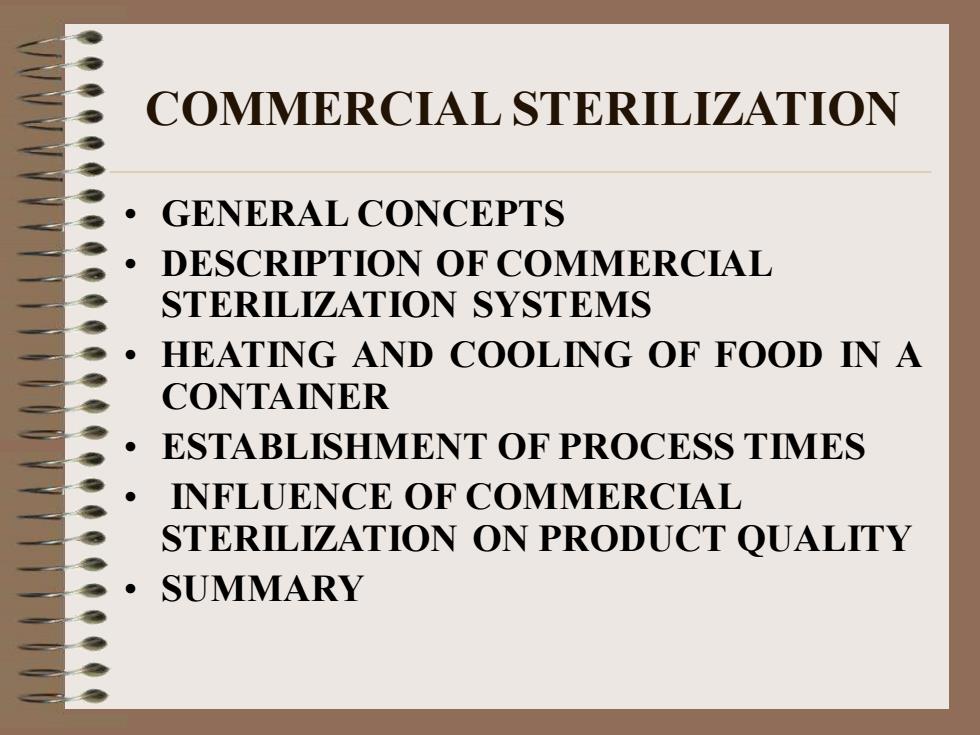
COMMERCIAL STERILIZATION • GENERAL CONCEPTS • DESCRIPTION OF COMMERCIAL STERILIZATION SYSTEMS • HEATING AND COOLING OF FOOD IN A CONTAINER • ESTABLISHMENT OF PROCESS TIMES • INFLUENCE OF COMMERCIAL STERILIZATION ON PRODUCT QUALITY • SUMMARY
COMMERCIAL STERILIZATION • GENERAL CONCEPTS • DESCRIPTION OF COMMERCIAL STERILIZATION SYSTEMS • HEATING AND COOLING OF FOOD IN A CONTAINER • ESTABLISHMENT OF PROCESS TIMES • INFLUENCE OF COMMERCIAL STERILIZATION ON PRODUCT QUALITY • SUMMARY

GENERAL CONCEPTS
GENERAL CONCEPTS

Factors influencing thermal process • product pH or acidity influencing the thermal resistance of the microbial spore. • The heating and cooling characteristics of the product in the container. • The decimal reduction time (D) and the thermal resistance constant (Z) for the microbial population in the product. • The size of the container and the types of heating and cooling media utilized
Factors influencing thermal process • product pH or acidity influencing the thermal resistance of the microbial spore. • The heating and cooling characteristics of the product in the container. • The decimal reduction time (D) and the thermal resistance constant (Z) for the microbial population in the product. • The size of the container and the types of heating and cooling media utilized
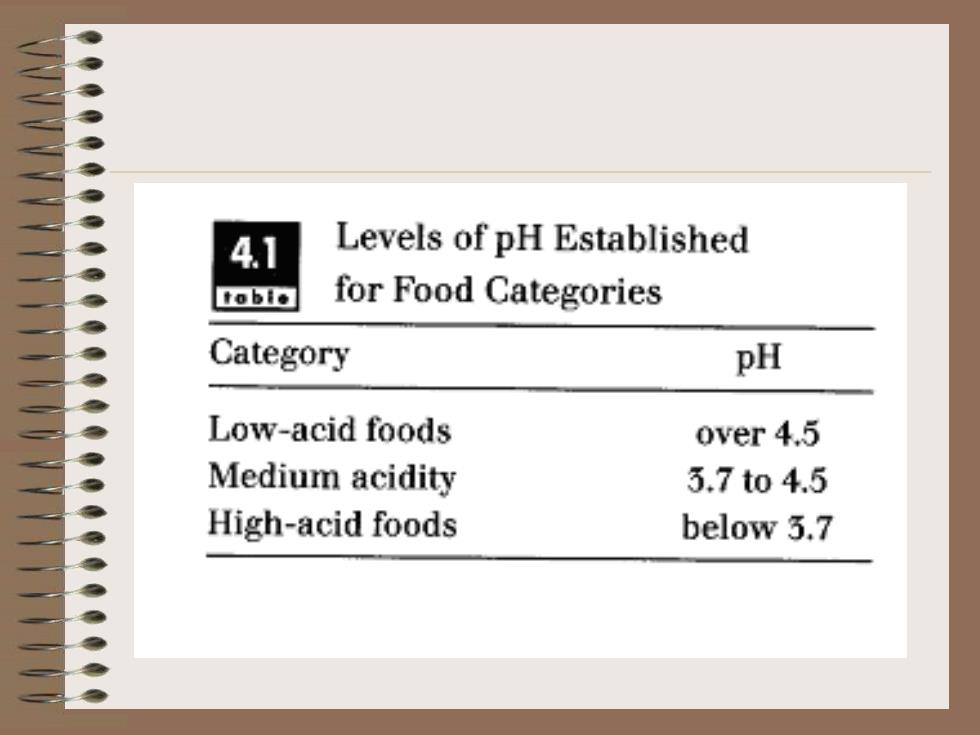
4.1 Levels of pH Established tobie for Food Categories Category pH Low-acid foods over 4.5 Medium acidity 3.7t04.5 High-acid foods below 5.7
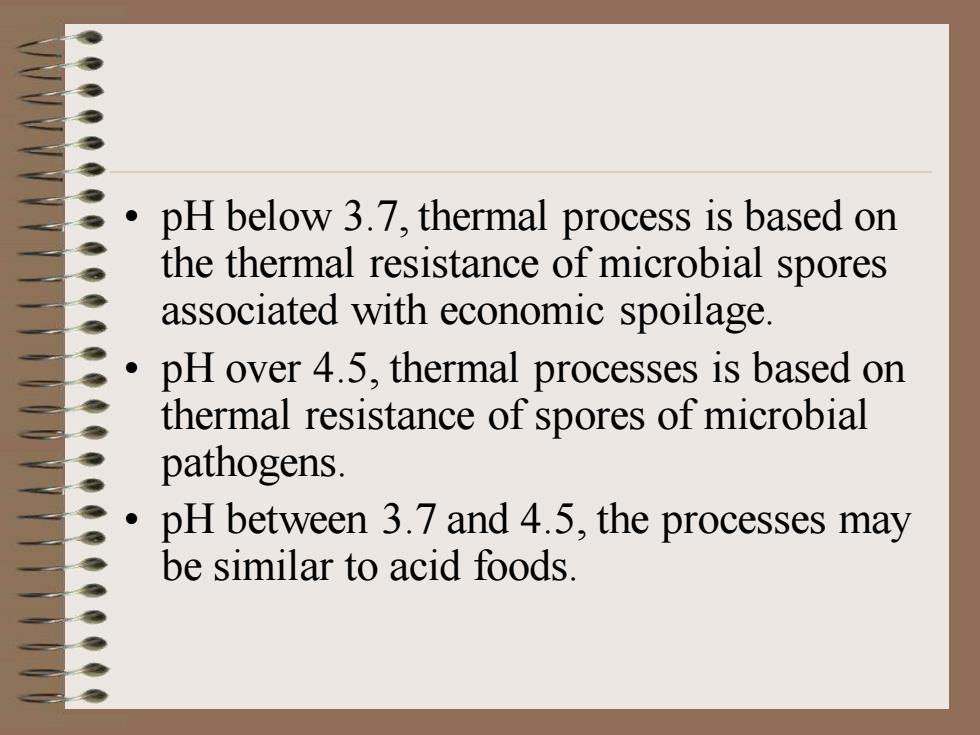
• pH below 3.7, thermal process is based on the thermal resistance of microbial spores associated with economic spoilage. • pH over 4.5, thermal processes is based on thermal resistance of spores of microbial pathogens. • pH between 3.7 and 4.5, the processes may be similar to acid foods
• pH below 3.7, thermal process is based on the thermal resistance of microbial spores associated with economic spoilage. • pH over 4.5, thermal processes is based on thermal resistance of spores of microbial pathogens. • pH between 3.7 and 4.5, the processes may be similar to acid foods
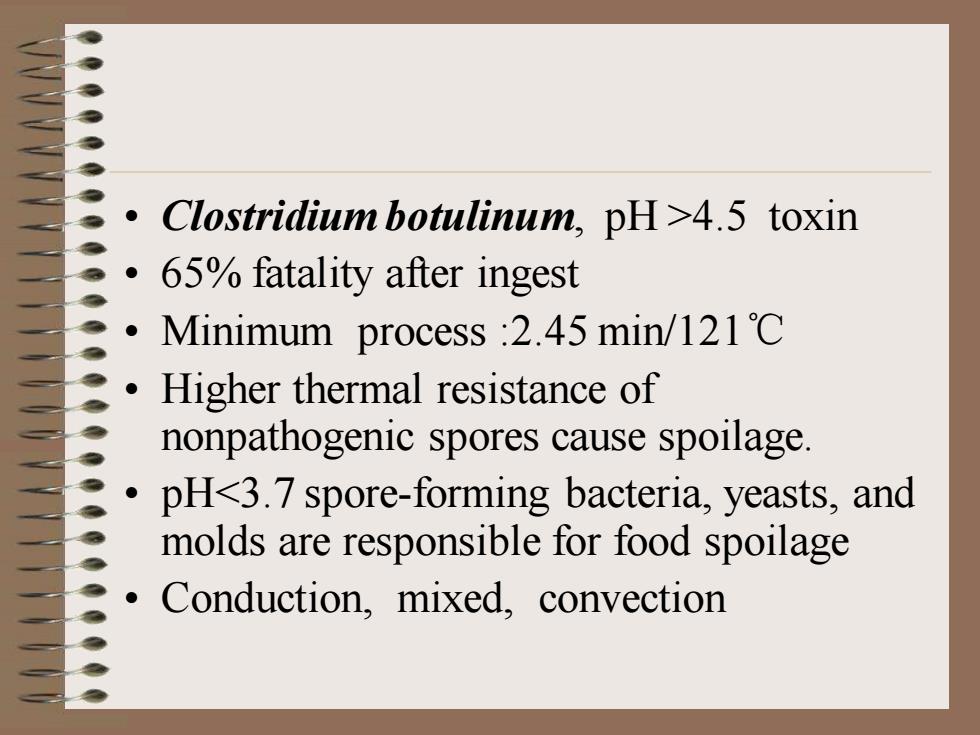
• Clostridium botulinum, pH >4.5 toxin • 65% fatality after ingest • Minimum process :2.45 min/121℃ • Higher thermal resistance of nonpathogenic spores cause spoilage. • pH<3.7 spore-forming bacteria, yeasts, and molds are responsible for food spoilage • Conduction, mixed, convection
• Clostridium botulinum, pH >4.5 toxin • 65% fatality after ingest • Minimum process :2.45 min/121℃ • Higher thermal resistance of nonpathogenic spores cause spoilage. • pH<3.7 spore-forming bacteria, yeasts, and molds are responsible for food spoilage • Conduction, mixed, convection
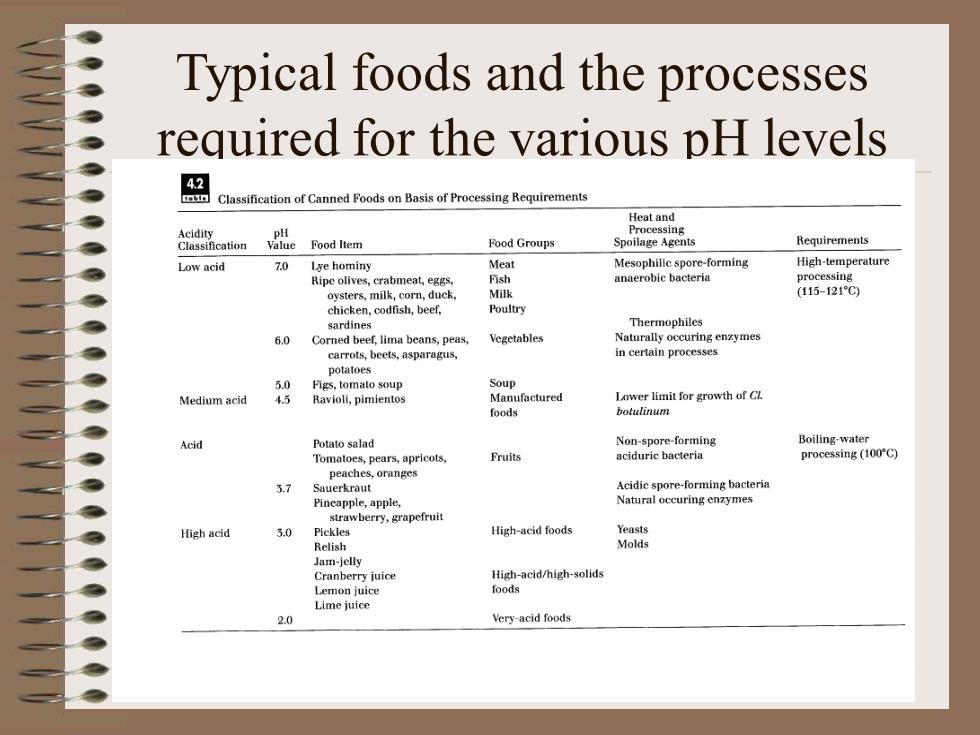
Typical foods and the processes required for the various pH levels
Typical foods and the processes required for the various pH levels
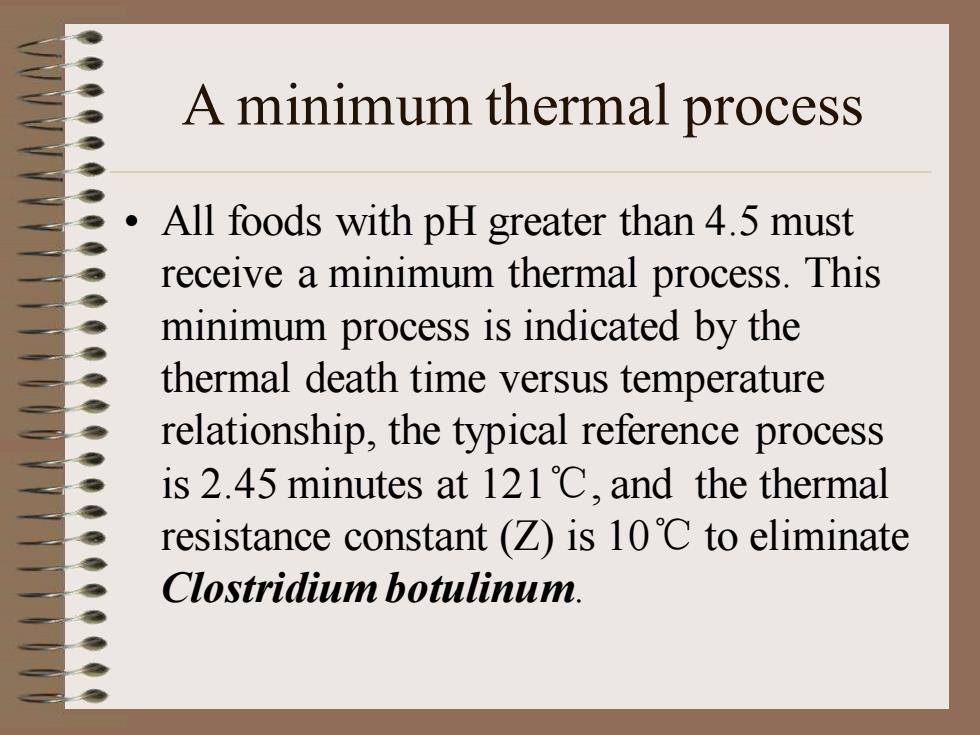
A minimum thermal process • All foods with pH greater than 4.5 must receive a minimum thermal process. This minimum process is indicated by the thermal death time versus temperature relationship, the typical reference process is 2.45 minutes at 121℃, and the thermal resistance constant (Z) is 10℃ to eliminate Clostridium botulinum
A minimum thermal process • All foods with pH greater than 4.5 must receive a minimum thermal process. This minimum process is indicated by the thermal death time versus temperature relationship, the typical reference process is 2.45 minutes at 121℃, and the thermal resistance constant (Z) is 10℃ to eliminate Clostridium botulinum

Thermal death time curve for C. B
Thermal death time curve for C. B
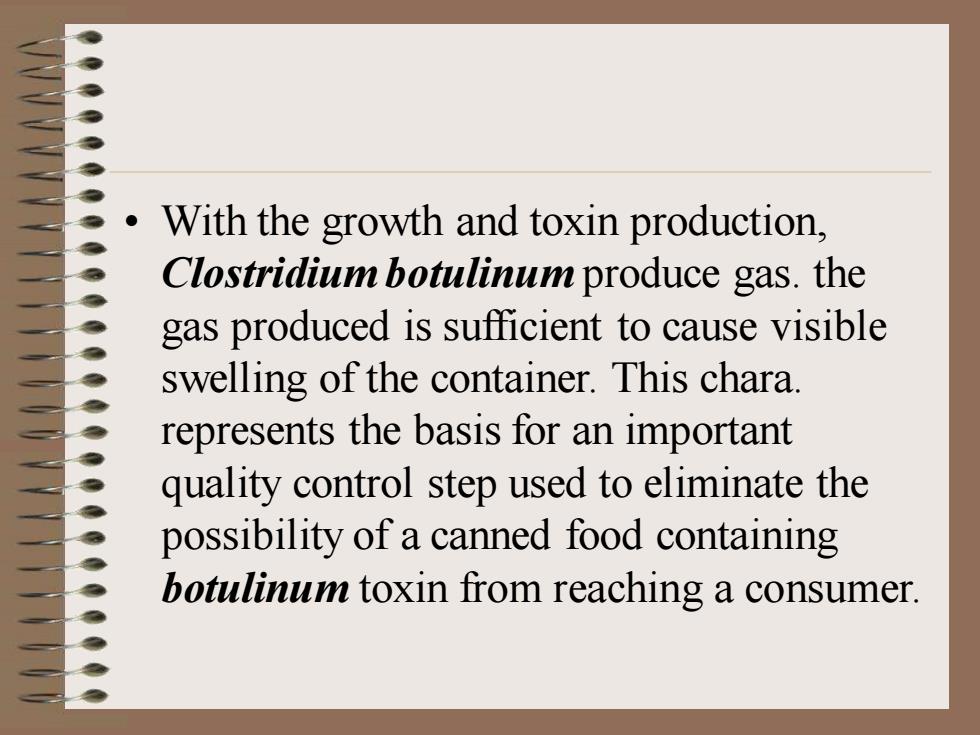
• With the growth and toxin production, Clostridium botulinum produce gas. the gas produced is sufficient to cause visible swelling of the container. This chara. represents the basis for an important quality control step used to eliminate the possibility of a canned food containing botulinum toxin from reaching a consumer
• With the growth and toxin production, Clostridium botulinum produce gas. the gas produced is sufficient to cause visible swelling of the container. This chara. represents the basis for an important quality control step used to eliminate the possibility of a canned food containing botulinum toxin from reaching a consumer